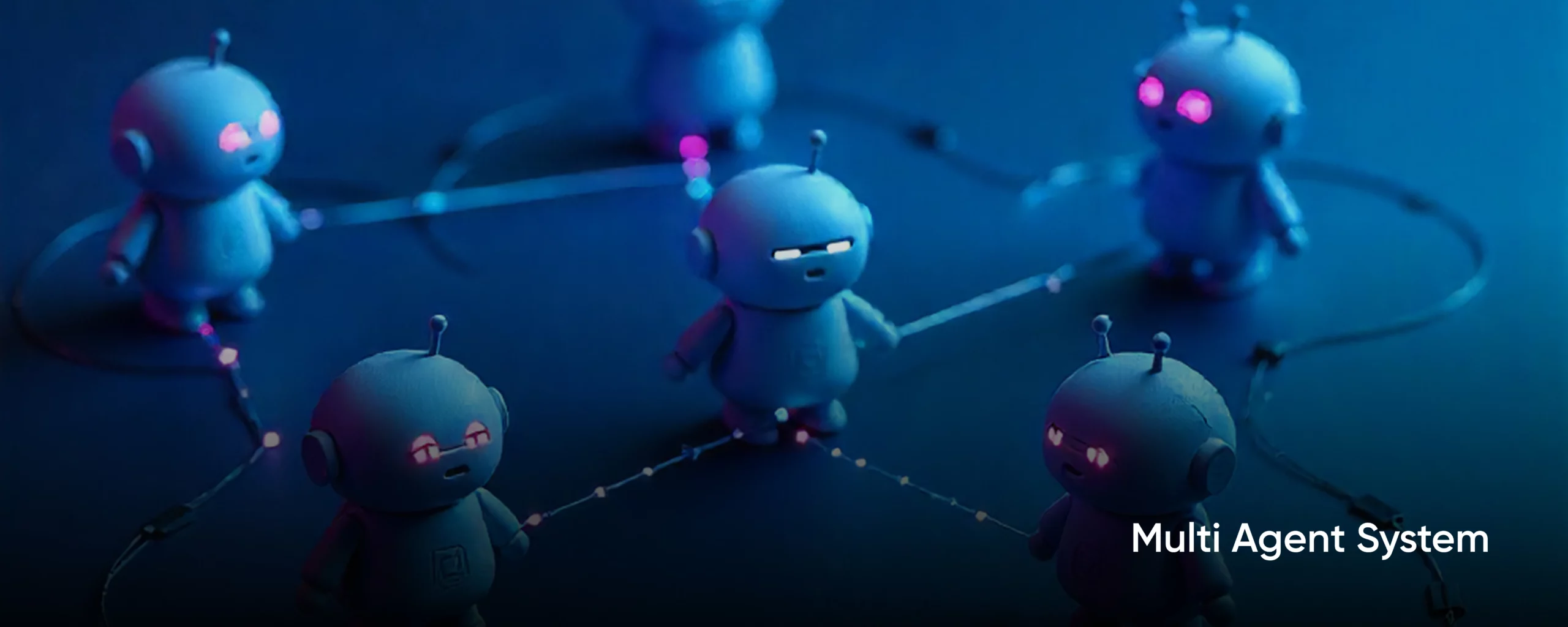Multi-Agent Systems: The Future of Collaborative AI

Artificial intelligence is moving beyond single bots and isolated models. Multi-agent systems are changing how we solve problems, manage complexity, and build scalable AI. By combining autonomous agents that collaborate, compete, or coordinate, businesses gain systems that are more adaptable, efficient, and resilient than traditional approaches.
This blog explains what multi-agent systems are, why they matter, and how industries like healthcare, logistics, and finance are using them. We’ll also look at challenges, frameworks, and best practices to help you assess where they fit in your roadmap.
What Are Multi-Agent Systems?
Multi-agent systems (MAS) are networks of autonomous agents working together in a shared environment. Each agent has its own goals, knowledge, and capabilities. Agents may be simple reactive bots, advanced AI models, or even robots acting in the real world.
Unlike single-agent systems, MAS rely on collaboration or competition between agents to manage dynamic tasks. Think of how ants build colonies or how a sports team wins games. Collective intelligence emerges from individual decisions.
Core Components
- Agents: Self-directed software or robots that can learn, adapt, and act.
- Environment: The physical or virtual space where interactions happen.
- Communication: Protocols like message-passing or negotiation.
- Organization: Structures such as flat (peer-to-peer), hierarchical, or hybrid.
These pieces enable MAS to show autonomy, adaptability, and emergent patterns where simple rules lead to complex results.
Types of Multi-Agent Systems
MAS can take different forms depending on goals and environments:
- Cooperative: Agents work together on shared tasks, like drones in a search-and-rescue mission.
- Competitive: Agents pursue conflicting objectives, such as trading bots in finance.
- Hierarchical: Higher-level agents manage lower ones, common in organizational workflows.
- Heterogeneous: Agents with different skills, such as mixed ground robots and drones.
- Hybrid: Blending reactive speed with deliberative reasoning, seen in autonomous vehicles.
Why Businesses Care About Multi-Agent Systems
Enterprises are adopting MAS because they solve problems that overwhelm single-agent setups. Four benefits stand out:
- Scalability and Flexibility
Agents can be added, removed, or updated without redesigning the entire system. This makes MAS ideal for environments that evolve constantly. - Resilience and Robustness
Failure in one agent doesn’t collapse the entire network. Systems continue functioning even under stress or partial failure. - Efficiency
Workloads can be distributed across agents. Tasks finish faster, and emergent intelligence improves outcomes. - Real-Time Responsiveness
MAS can act on live data without waiting for central human oversight. Disaster response is one example where this matters.
Industry Applications
Multi-agent systems are no longer research projects. They’re powering real use cases today:
Supply Chain and Logistics
Agents represent suppliers, manufacturers, and distributors. They coordinate inventory, routing, and forecasting. This reduces bottlenecks, optimizes costs, and shortens delivery cycles.
Healthcare
Agents track patient vitals, allocate resources, and personalize treatments. Real-time alerts can notify staff about anomalies, improving outcomes and reducing workload.
Finance
Trading bots use MAS to analyze markets, detect fraud, and manage risks. Their adaptability is a strength in volatile environments.
Transportation
In smart cities, agents manage signals and vehicles. The result is smoother traffic flow and reduced congestion.
Manufacturing and Robotics
Cobots and swarms coordinate assembly or disaster exploration. Multi-agent robotics is shaping the future of Industry 4.0.
Energy Management
Smart grids use agents to balance renewable and traditional sources. The system adjusts to demand fluctuations with greater stability.
Challenges with Multi-Agent Systems
MAS aren’t a silver bullet. Businesses must navigate hurdles:
- Coordination Complexity: Multiple agents risk conflicts without strong protocols.
- Communication Overhead: Too many messages can create bottlenecks.
- Scalability Limits: Large deployments need strong infrastructure.
- Security and Privacy Risks: MAS can be targets for spoofing or bias-driven decisions.
- Unpredictability: Emergent behaviors may cause new issues.
- High Development Costs: Building and debugging MAS requires time, expertise, and investment.
Frameworks for Building Multi-Agent Systems
Several frameworks help accelerate MAS deployment:
- LangGraph: Graph-based orchestration for complex workflows with loops and persistence.
- CrewAI: Role-based agent collaboration with monitoring and extensibility.
- AutoGen (Microsoft): Conversational agents with flexible human-in-the-loop features.
- Swarm (OpenAI): Lightweight orchestration for modular handoffs.
- MetaGPT: Simulates software teams with specialized roles.
These tools connect with LLMs like GPT and Anthropic’s models, enabling agents to combine reasoning with external actions.
Best Practices for Implementation
When introducing MAS into business workflows, follow a phased approach:
- Start Small
Begin with a few agents and expand. Define clear roles and communication methods. - Match Architecture to Needs
Flat structures work well for decentralized systems. Hierarchical setups suit structured organizations. - Plan for Scalability
Use distributed training and asynchronous scheduling to manage growth. - Secure the System
Encrypt communications, monitor performance, and protect against malicious inputs. - Test Before Deployment
Simulate environments and run extensive validation before going live. - Balance Autonomy with Oversight
Keep humans in the loop for critical tasks like finance or healthcare.
Where Is This Heading?
Multi-agent systems are moving fast. Enterprises are already using them for personalized marketing, coding assistants, and advanced simulations. Looking ahead, expect:
- Better interoperability across frameworks.
- Stronger ethical guidelines and safeguards.
- Smarter agent learning for natural human-AI collaboration.
For businesses, the message is clear: MAS aren’t just theory. They’re practical tools that can transform operations at scale.
How Isometrik AI Fits In
Isometrik AI helps organizations build scalable, adaptive, and secure AI systems. Our platform supports multi-agent orchestration with monitoring, compliance, and real-time collaboration built in. If you’re exploring how multi-agent systems can accelerate your workflows, Isometrik AI can help you deploy them with confidence.
Conclusion
Multi-agent systems are shaping the next era of AI. By combining multiple agents into coordinated networks, they deliver speed, scalability, and adaptability unmatched by traditional AI setups. While challenges exist, frameworks and best practices make adoption feasible for industries from logistics to healthcare.If you’re ready to put multi-agent systems to work for your organization, connect with Isometrik AI.